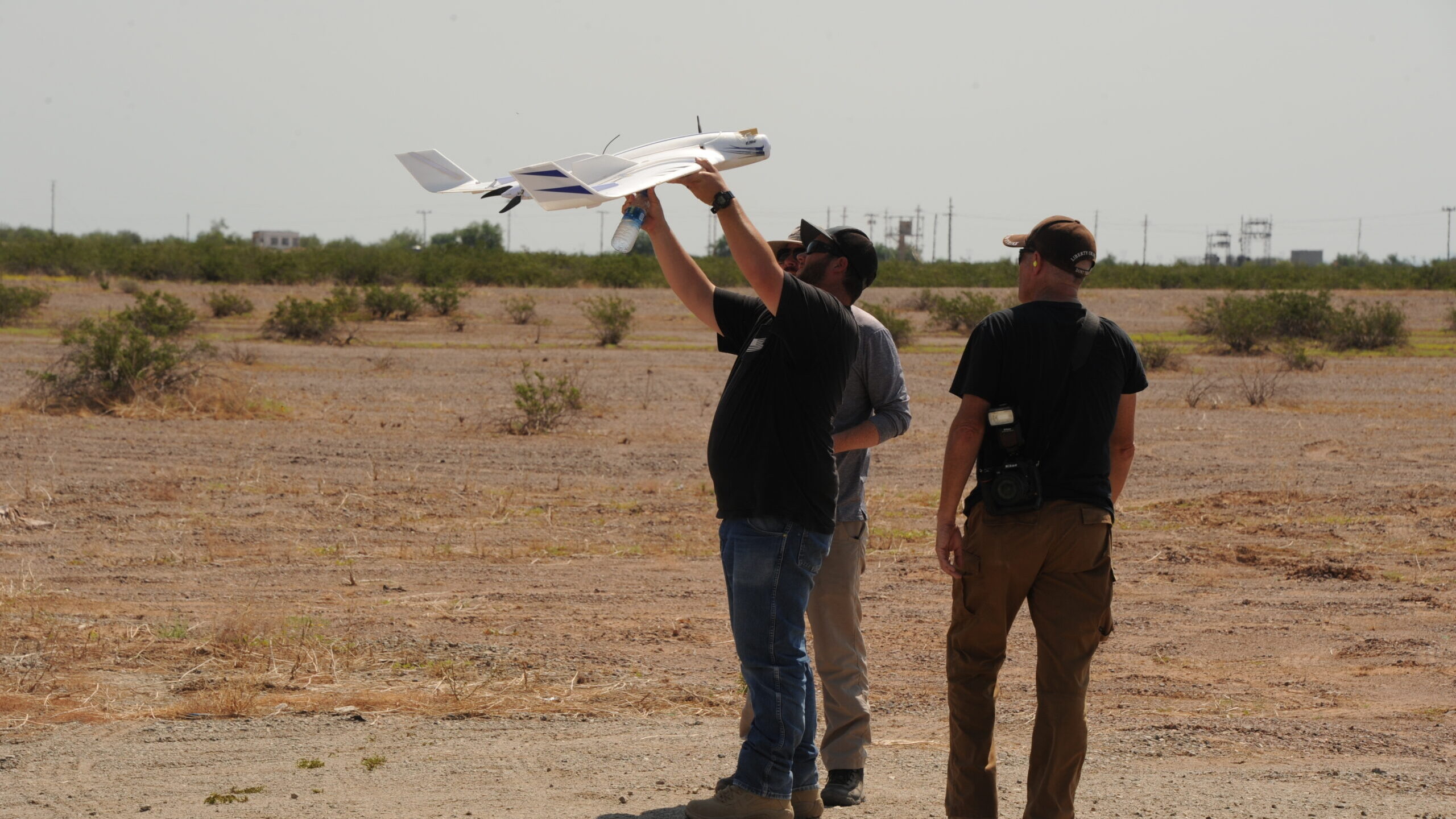
Earlier this year, U.S. Army Yuma Proving Ground (YPG) provided the ideal backdrop for a week-long counter-small unmanned aerial system (C-sUAS) demonstration. (Mark Schauer/Army)
WASHINGTON: The Army recently completed its latest demonstration of ground-based aerial denial and handheld solutions to counter small drone threats that the military views as perilous to warfighters.
The demonstration, held by the Joint Counter-Small Unmanned Aircraft Systems Office (JCO), comes amid high profile deployments of low-cost small drones seen in conflicts in Israel, Saudi Arabia and the Nagorno-Karabakh.
“Folks like to say this is one of the biggest threats since the IED [improvised explosive device],” Col. Greg Soule, director of the acquisition and resources division at the JCO, said on a call with reporters on Friday.
The demonstration at Yuma Proving Ground, Ariz., in late August and early September included both ground-based aerial denial and handheld solutions. Three vendors — Flex Force, Smart Shooter and Northrop Grumman — demonstrated remote-controlled systems that shot down incoming aircraft with bullets of various sized.
Two other vendors, Drone Shield and IXI, showed officials electronic warfare systems designed to disrupt the drone flight.
Officials on the call said that the results for all the vendors varied, but declined to get into specifics.
The vendor solutions faced commercial off-the-shelf UAS that “we see commonly operated” by threats across the world, according to Mike DiGennaro, the JCO team lead for C-SUAS testing. DiGennaro declined to get into details of the threat profile vendors faced, such as the altitude or speed at which they flew.
The vendors all faced a common tests that simulated an “expected” threat that a convoy or patrol could face. Additionally, each did a side excursion to demonstrate their capability “above and beyond” the common threats, DiGennaro said.
Officials told reporters on the call that the data analysis process has just started and that no decisions have been made about future contracts.
“We’ll be determining our path forward on whether any of those did perform well enough to fill the gap and potentially looking at a contract opportunity,” Soule said. “Nothing has been definitively decided yet, nor communicated as such.”
The Defense Department chose the Army as the executive agent for Counter-sUAS last year. The C-sUAS efforts include the Army’s Rapid Capabilities and Critical Technologies Office and representation from the other services.
The previous experiment, held in April, was completed in collaboration with the Air Force and evaluated Low Collateral Effects Interceptor capabilities. Moving forward, Soule said that the experiments will continue on a semi-annual basis with the next one scheduled for April 2022.
In a ‘world first,’ DARPA project demonstrates AI dogfighting in real jet
“The potential for machine learning in aviation, whether military or civil, is enormous,” said Air Force Col. James Valpiani. “And these fundamental questions of how do we do it, how do we do it safely, how do we train them, are the questions that we are trying to get after.”


























